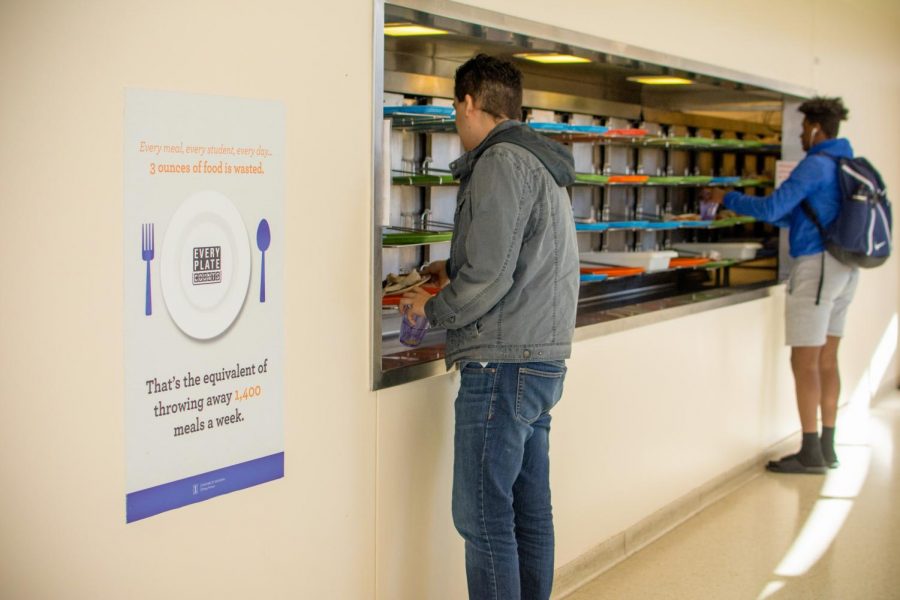Dining services reduce food waste through donation and tracking system
Students place their used utensils and plates in the conveyor belt for cleaning after their meals at the Ikenberry Dining Hall.
April 23, 2018
University Dining is taking measures to reduce pre- and post-consumer food waste in dining halls through donation methods and tracking systems, in time for Stop Food Waste Day on Friday.
Dr. Dawn Aubrey, associate director of University Housing Dining Services, said the University’s consumer food waste has decreased by almost 95 percent since 2007.
Aubrey said University Dining started using a program called Lean Path to weigh, classify and take pictures of pre-consumer food waste, which then becomes available for donation through a program called Waste No Food.
University Dining also assists Unify, a Registered Student Organization on campus, with Project For Less. The project packages single- to four-serving meals that are transported to Wesley Food Pantry.
As long as the pre-consumer food item is wholesome and ready to be eaten, it is made available for donation, Aubrey said.
Get The Daily Illini in your inbox!
Products such as onion peelings and fat from meat products are not used or served and instead go into a “digester” that breaks down biodegradable waste into a lipid-free, graywater residual in under 24 hours. Aubrey said the dining halls will not be creating a carbon footprint through composting that way.
“Composting is good as long as you are using all of the compost,” she said. “If you are not going to be using it, it continues to create methane gases.”
Aubrey said she receives a weekly report of food waste from Sunday to Saturday at all dining locations. According to the report, 7,800 pounds of food waste were created in the week of April 8. However, this number includes the pre-consumer wholesome food that is often made available for donation.
Aubrey said food made available for donation is classified in the food waste category but is recorded separately.
The Lean Path system was implemented in 2013 and has reduced food waste by 747,000 tons, Aubrey said.
University Dining has a menu management system that allows dining workers to forecast how much food to prepare based on what the menu for the day is and what past consumption has been for different food items.
“We use that system to track all of our purchases, production, recipes and inventory,” Aubrey said. “When it comes to our food … we employ a program called JIT, Just In Time, to prepare food in batches so we are not over-preparing.”
Food, such as chicken breast, pizza, fish or noodles for noodle bowls, are cooked in batches while other more laborious dishes, such as lasagna, are not made all at once, Aubrey said. Dining services checks to see how quickly they are being consumed and then decides if they need to put more in the oven.
The best way to not have food waste is to not create it from the beginning, Aubrey said.
“We have an obligation to make sure we adjust according to our students’ needs,” she said. “But I also encourage that, on a personal level, reducing food waste is something (students) can truly contribute to.”







